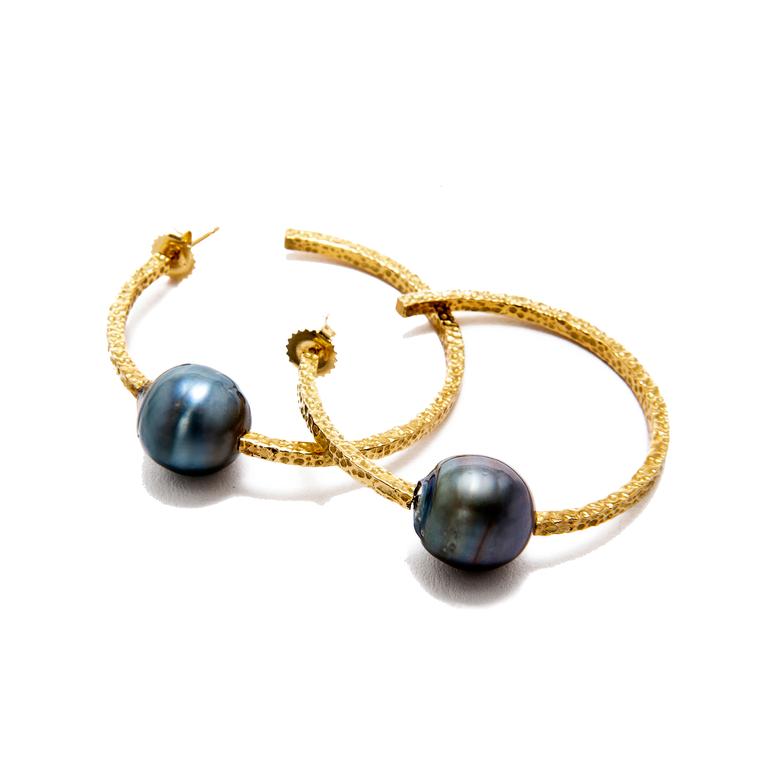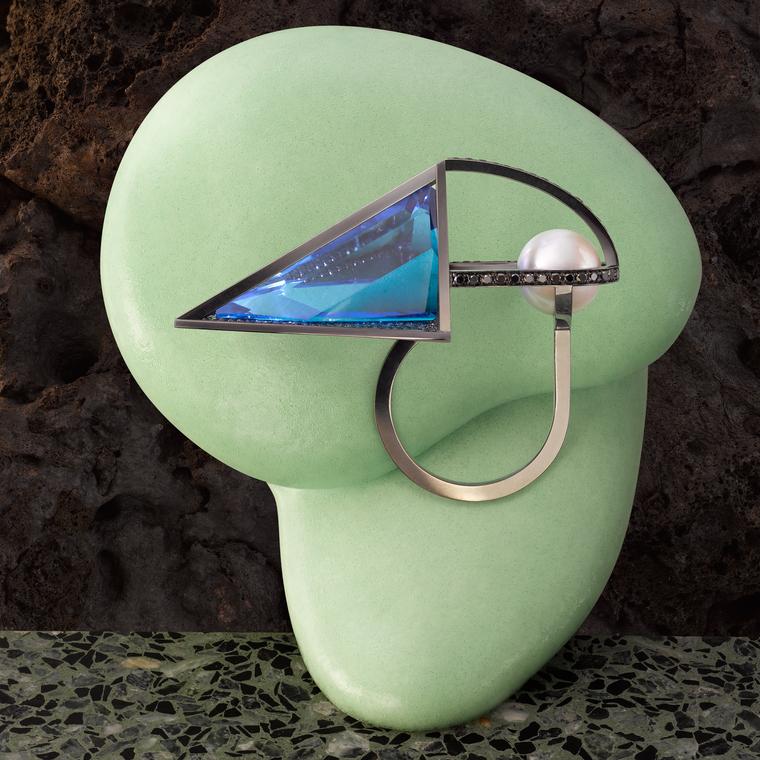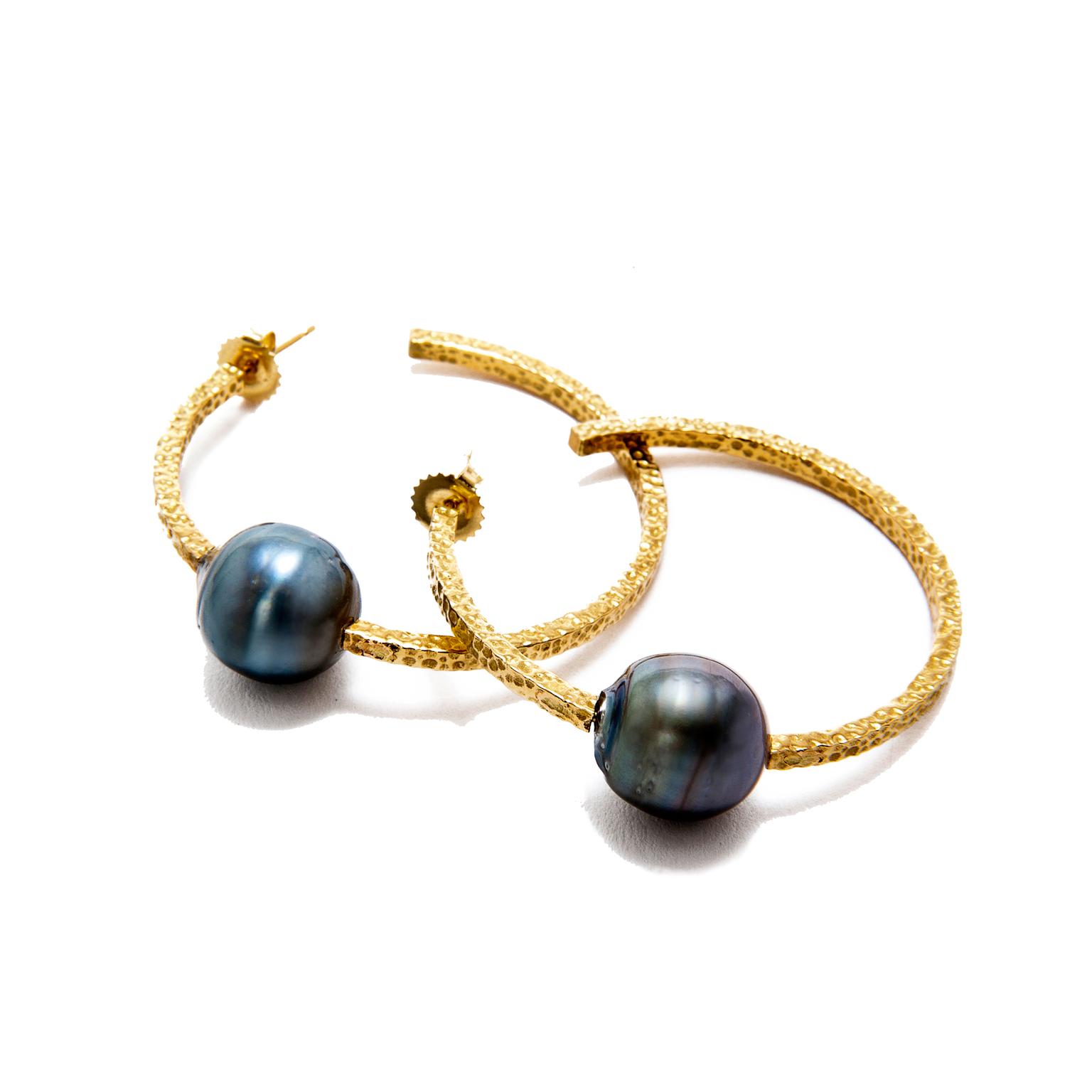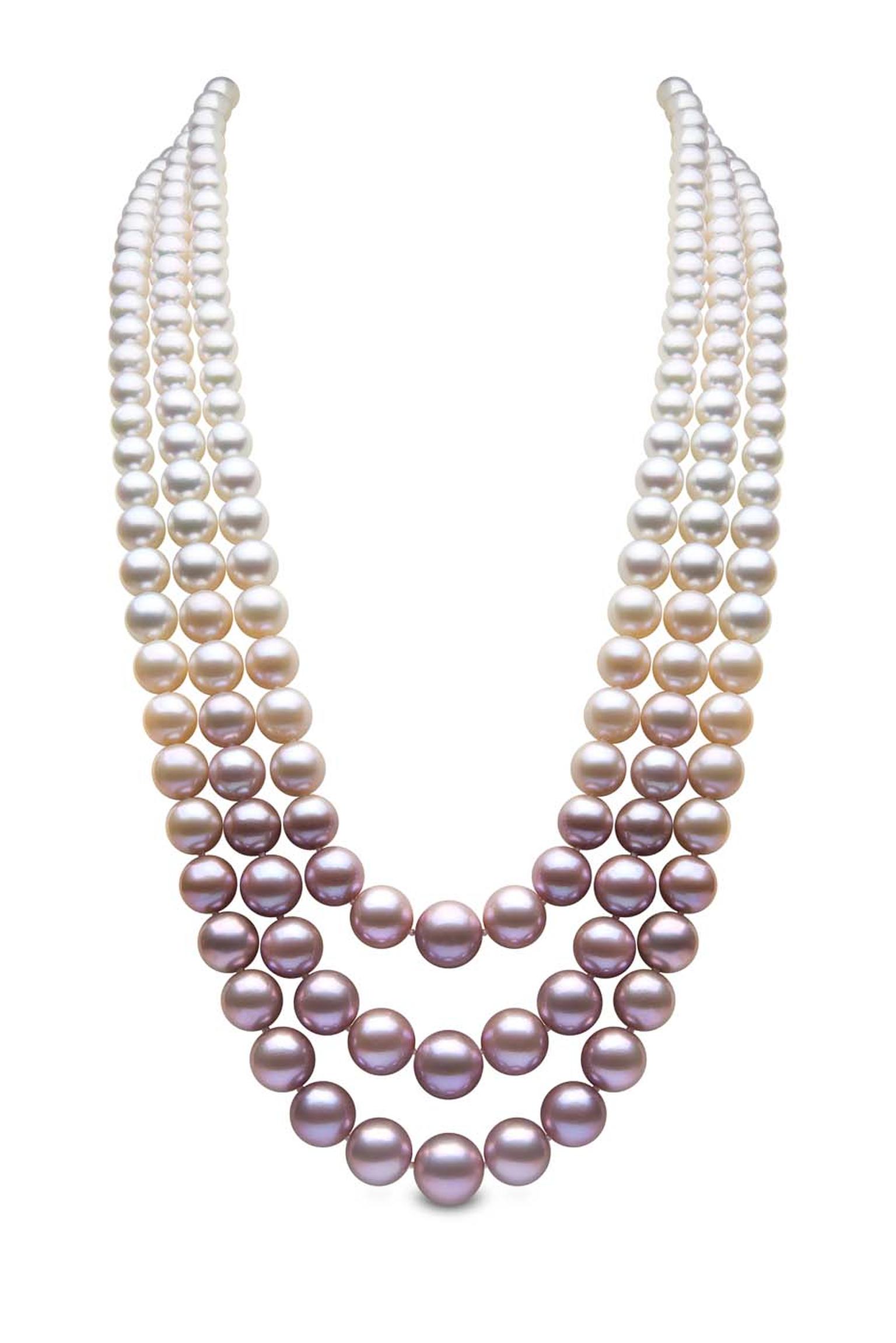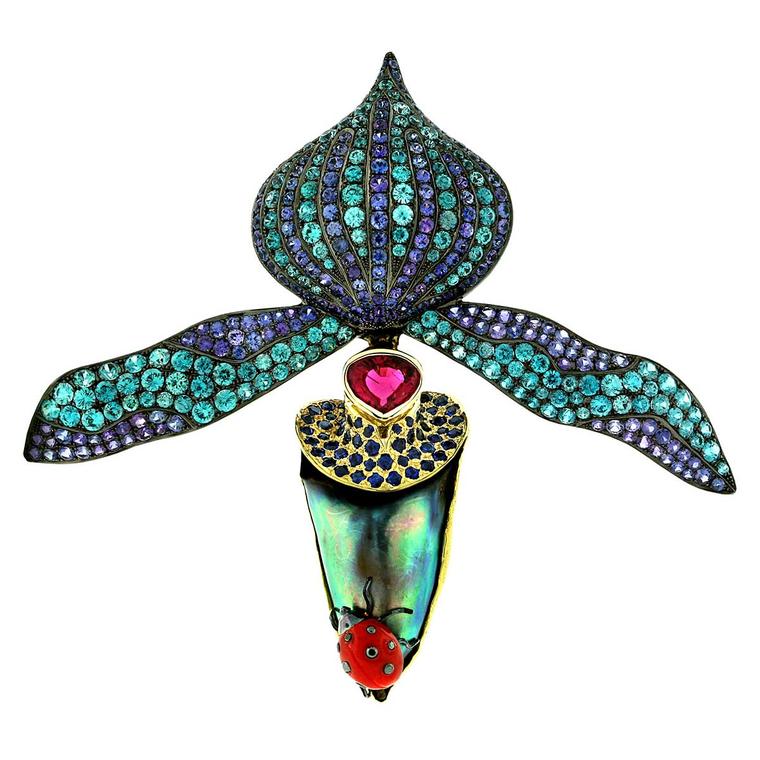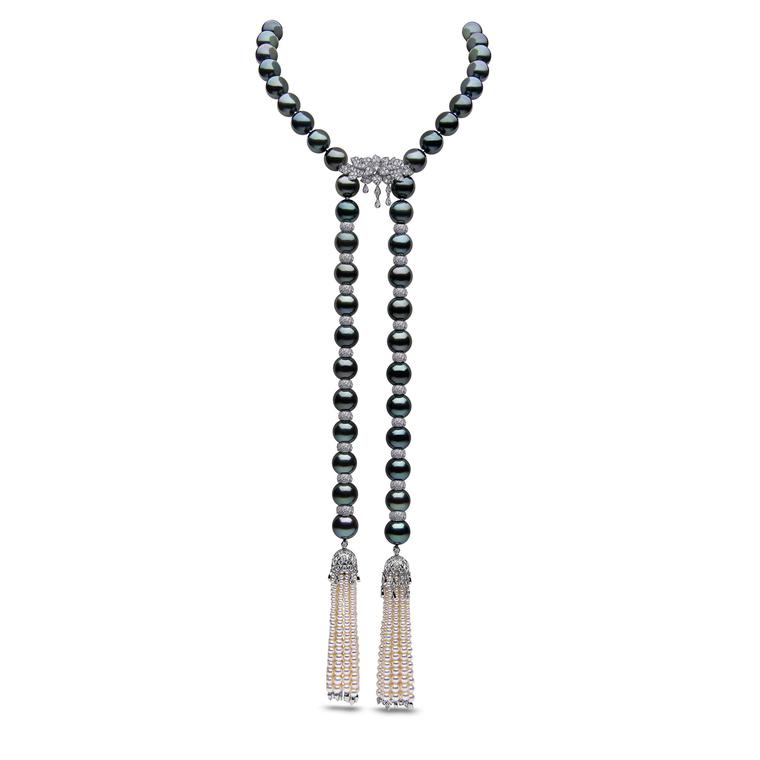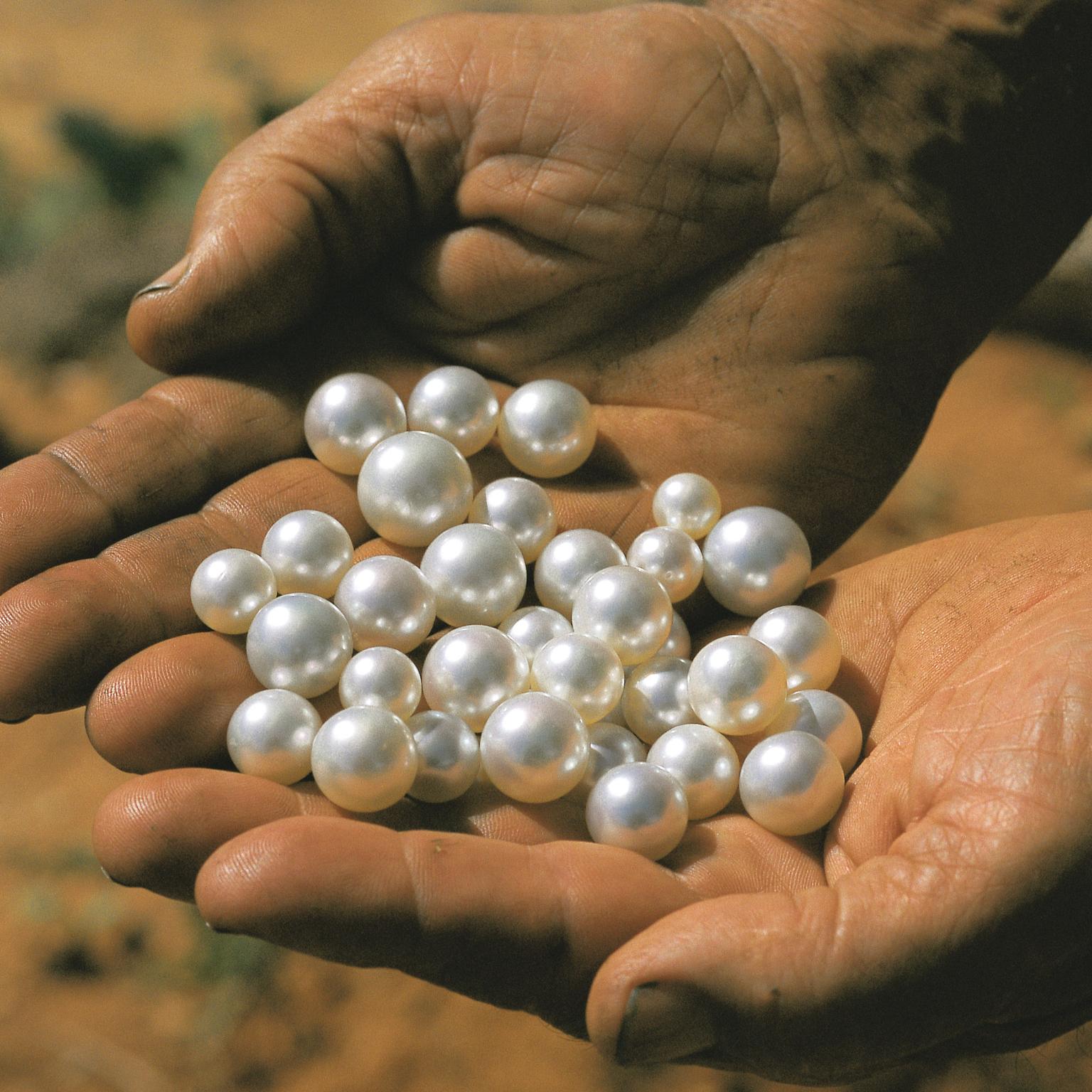
Officially the world’s oldest gem, pearls have been revered since long before written history. For this reason, their discovery cannot be attributed to one person in particular, but it is believed that they were first discovered by people searching for food along the seashore. We know that they have been worn as a form of adornment for millennia thanks to a fragment of pearl jewellery found in the sarcophagus of a Persian princess that dates back to 420 BC, which is now on display at the Louvre in Paris.
Pearls were presented as gifts to Chinese royalty as early as 2300 BC, while in ancient Rome, pearl jewellery was considered the ultimate status symbol. So precious were the spherical gems that in the 1st century BC, Julius Caesar passed a law limiting the wearing of pearls only to the ruling classes.
The abundance of natural oyster beds in the Persian Gulf meant that pearls also carried great importance in Arab cultures, where legend stated that pearls were formed from dewdrops that were swallowed by oysters when they fell into the sea. Before the advent of cultured pearls, the Persian Gulf was at the centre of the pearl trade and it was a source of wealth in the region long before the discovery of oil.
With such a long and ancient history, it is no wonder that, over time, the pearl became shrouded in myth and legend. In ancient China, pearl jewellery was said to symbolise the purity of the wearer while, in the Dark Ages, knights often wore pearls on the battlefield, believing that the precious gemstones would keep them safe. According to legend, Cleopatra crushed a pearl into a glass of wine to prove to Marc Antony that she could give the most expensive dinner in history.
Pearls have been an important trade commodity since Roman times, and the discovery of pearls in Central and South America in the 15th and 16th century led to the so-called Pearl Age. With the escalating demand for pearls in Western Europe, where ladies of nobility and royalty wore elaborate pearl necklaces, earrings, pearl bracelets and brooches, by the 19th century, demand for pearl jewellery became so high that oyster supplies began to dwindle.
Unlike gemstones that are mined from the earth, a living organism produces a pearl and, in fact, their very existence is a freak of nature. A pearl is formed when an irritant, such as a parasite or piece of shell, becomes accidentally lodged in an oyster's soft inner body, causing it to secrete a crystalline substance called nacre, which builds up around the irritant in layers until a pearl is formed. Cultured pearls are formed through the same process, the only difference being that the irritant is implanted in the oyster rather than entering it by chance.
Until the start of the 20th century, the only way of collecting pearls was through divers risking their lives at depths of up to 100ft to retrieve the pearl oysters. It was a dangerous pursuit and one that carried limited chance of success as a ton of oysters would throw up only three or four quality pearls. Freshwater molluscs living in shallow rivers and streams were easier to gather, but these pearl beds were often reserved for harvesting by royalty.
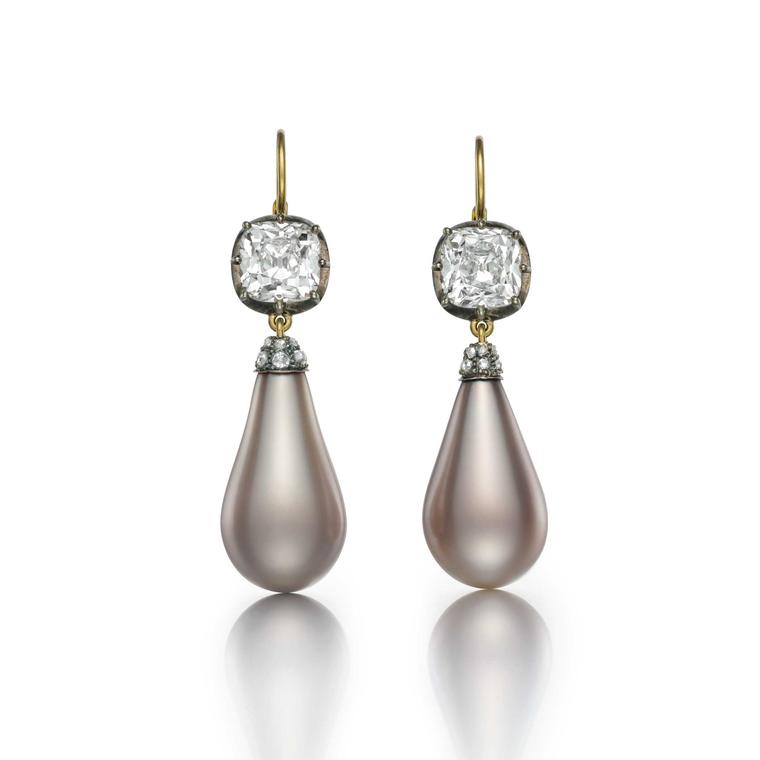
Today, natural pearls are among the rarest of gems and their almost entirely depleted supply means that they are found very infrequently only in the seas off Bahrain and Australia. The scarcity of natural pearls is reflected in the prices they fetch at auction, with antique pearl necklaces and earrings selling for record-breaking sums. Last year, a pair of natural pearl earrings - left - which once belonged to Empress Eugenie of France, wife of Napoleon Bonaparte - set a new world record when they sold for US$3.3 million at Doyle New York.
Discover the record-breaking pearls in history here.

Intense bidding wars have also erupted over high-quality natural pearl necklaces with the winning bids running into several million dollars. Elizabeth Taylor's famous La Peregrina 16th century pearl, which sold for US$11.8 million, is a case in point. Unlike the shatterproof diamond, the formation of natural pearls is dependent on clean seas and stable temperatures, both of which have been thrown into disarray by pollution and global warming. Almost all pearl jewellery on the market today is made using pearls that have been cultivated and farmed.

Kokichi Mikimoto, the son of a Japanese noodle maker, created the world's first cultured pearl in 1893 by manually introducing an irritant into an oyster to stimulate it to form a pearl. The introduction of cultured pearls in the early 1900s turned the whole pearl industry on its head and caused the value of natural pearls to plummet. By 1935, there were 350 pearl farms in Japan, producing 10 million cultured pearls a year, although Mikimoto had to constantly defend himself against accusations that his pearls were not "real". The scientific evidence spoke to the contrary; the cultivated pearls had the exact same properties as those formed in deep sea beds, the only difference was that they had a helping hand at getting the natural process started.
Mikimoto's Akoya pearls are still used today by the jewellery house that bears his name and are renowned for their brilliant lustre and rich colours, which range from white, cream and pink, to silvery pink.
Pearls can be found, or cultivated, in freshwater or saltwater and there are several different types of pearls depending on what mollusc they originate from. Cultured freshwater pearls are produced mainly in China and, due to their abundance, they are more affordable than their saltwater cousins. Saltwater pearls include the aforementioned Akoya as well as Tahitian pearls, which originate from Tahiti and other islands in French Polynesia. South Sea pearls hail from Australia, Indonesia and the Philippines. The latter is the largest of all the pearl varieties and come in white, cream or golden hues with sizes ranging from 9mm to 20mm. A Tahitian pearl is also known as a black pearl, although its colour spectrum also includes grey, blue, green and purple.Read more about Tahitian pearls here.
Coloured pearls were popular with both men and women as far back as the 17th century and, in recent years, these dark wonders of the sea have seen a revival, with a new generation of fashion-conscious consumers embracing jewellery featuring coloured pearls as an edgier alternative to the traditional white pearl necklace.

"Baroque" is a term applied to pearls that are non-symmetrical, and these irregular shapes are more common in freshwater pearls. While perfectly round pearls have traditionally been the most coveted, baroque South Sea or Tahitian pearls are often used in unique, contemporary jewellery to great effect.
Strictly speaking, oysters only produce pearls, but some gems that are created in other molluscs also qualify for this moniker. These include incredibly rare, oval-shaped conch pearls and yellowish-orange Melo Melo pearls. These non-nacreous pearls are formed by a substance composed mainly of calcite, and while they lack the iridescence of nacreous pearls, their beauty is no less spectacular.
Ranging in colour from yellow to coral red, with soft pink being the most popular colour, conch pearls cannot be cultivated and are only found in one in every 10,000 Queen conch molluscs. As a result, conch pearls are incredibly valuable and even a pea-sized gem can fetch as much as US$120,000. Mikimoto recently launched a collection of conch pearl jewellery, and the distinctive pink pearls have also been incorporated into jewels by the likes of Boucheron jewellery and Tiffany & Co.
Also incredibly beautiful and sought after are abalone pearls, which are among the rarest in the world as they are not cultured and only found by chance in rocky, coastal waters.

In terms of their fashion currency, pearls have had something of a bumpy journey, particularly in the latter half of the 20th century. In the 1920s, pearl necklaces in the form of simple strands reflected the fashion for streamlined, unfussy designs. Known as sautoirs, these long necklaces would often measure more than 30 inches and be decorated with a tassel as a pendant. "A woman needs ropes and ropes of pearls," declared Coco Chanel, who was rarely seen without a pile of pearls casually worn around her neck. She shocked society ladies by mixing the real thing with fakes and teaming her pearls with casual daywear. Largely thanks to her endorsement, costume jewellery became popular and many women wore imitation pearl jewellery made from Lucite or glass.
Inspired by Mademoiselle's passion for the gem, in 2014 Chanel launched a high jewellery collection devoted to the classic pearl. The Perles Swing set, consisting of a pearl bracelet, necklace and earrings, is a strikingly simple but elegant combination of pastel-coloured South Sea, Tahitian and freshwater cultured pearls.
Jackie Kennedy is another pearl-wearing icon whose signature triple strand pearl necklace actually consisted of imitation gems made from glass rather than the real deal. Audrey Hepburn's name is also synonymous with pearls, be it a necklace or a pair of pearl earrings subtly accentuating her gamine features.
Somewhere around the 1980s pearls gained a reputation as the preserve of older ladies in twinsets with blue-rinse hairdos. Now, however, the tide is turning and pearls are once again back in favour with the fashionable set. A number of top jewellery houses prominently feature pearls in their high jewellery collections and they are also being incorporated into contemporary jewellery designs by innovative designers such as Kova. Read about how to wear pearls in 2016 here.
As with gemstones, the quality of a pearl is determined by several criteria including its size, shape, colour and lustre. An important factor to look out for is the thickness of the nacre as this determines not only the pearl's lustre but also how long it will last. Unlike the more robust diamond, pearls require a bit of TLC to ensure they stay looking pristine. Pearl jewellery should always be stored separately from diamonds to ensure the harder stone does not scratch their surface. We would recommend putting pearl jewels into a cloth bag before placing them in the jewellery box. Acidic elements such as perfume and even perspiration can dull a pearl's lustre, so never spray scent directly onto them and wipe the pearls before putting them away. In the case of pearl necklaces, it is a good idea to take them to a jeweller every five years to check whether they need re-stringing.
Traditionally, pearls were celebrated for their uniformity in size and colour but now it seems the more avant-garde, the better. Pearls in vibrant colours and unusual shapes are being incorporated into unique jewels by jewellers renowned for their creativity, such as Boghossian and Hemmerle, while YOKO London offers an incredibly broad palette of coloured pearls so vibrant it's difficult to believe they were formed naturally - far removed from the traditional discreet white pearl studs gracing the ear lobes of ladies who lunch.
In 2015 Annoushka launched the Golden Pearls collection exclusively at Harrods to celebrate 25 years as a jewellery designer. The Art Deco-inspired necklace, pendants, earrings and cocktail pearl ring showcase rare South Sea pearls with a deep and perfectly unblemished golden lustre from Iloilo - an exotic island in the Philippines that Annoushka credits with kick-starting her career in jewellery design.
At Baselworld 2015, Australian pearl company Autore launched the Orchid collection, inspired by the indiginous blooms of Australia. The magnificent array of perfectly matched South Sea and Tahitian pearls, combined with flowers fashioned out of coloured gemstones, were all plucked from the sea off the coast of Australia because not only does Autore produce exquisite pearl jewellery, it also owns a thriving pearl farm and is a big player in the international South Sea pearl business.
From dramatic black pearls with their dark, iridescent shimmer to perfectly imperfect baroque pearls, these miracles of the sea have become a must-have gem once again as they stride confidently into the 21st century.


